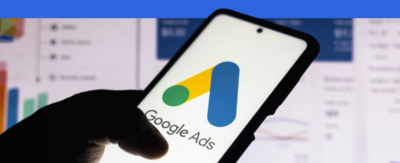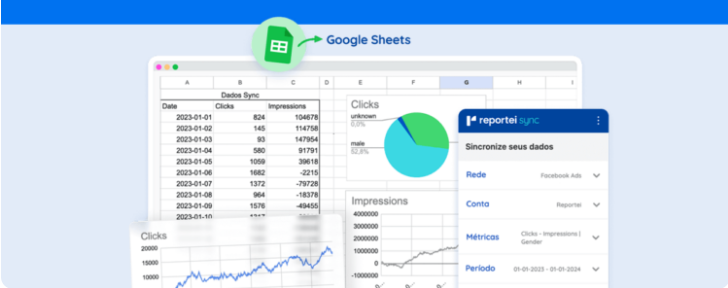Learn what criteria Google Ads uses to analyze the quality of your ads and how to use this information to make your campaigns more efficient
Appearing first in Google is one of the major goals for companies that invest in ads and aim to increase sales through this channel. But, in such fierce competition, how can one stand out in the search engine and get more user clicks?
In this article, we explain the criteria used by Google Ads to assess the quality of your ads and present them in the best positions, and we offer tips to achieve better results with your creatives. Follow along!
5 Criteria to Appear First in Google Ads
“How do I get my site to appear first in Google?”: without a doubt, this is one of the biggest questions that arise when someone starts investing in search ads on the platform and faces the intense competition that comes with it, right?
After all, it’s not just about buying keywords related to your products and business in general, but about offering the best content to attract user clicks and convert them into leads or customers when they land on your site.
Therefore, Google Ads takes into account a very important factor when building its ranking: the Ad Quality Score (QS), which helps to understand if it really meets the users’ needs and should win the auction.
For this, the platform calculates based on 3 main criteria – expected click-through rate, ad relevance, and the user experience on the landing page. Below, we talk in more detail about these and another 2 factors that make a difference in achieving a better QS. Let’s go?
1.Expected Click-Through Rate
The first QS criterion is the expected click-through rate, a Google Ads metric that calculates the likelihood of the ad being clicked when it is shown to users.
For this, it considers not only the purchased keywords but also the coherence of the ads in relation to them and elements that help attract the attention of those searching.
2.Relevance of Your Ad
In fact, the second QS analysis criterion is the level of connection between your ad and the word searched by the user. In other words, how relevant the creatives are and whether they propose solutions to the potential customer’s pain points.
Thus, to improve the relevance of the ad, it is first necessary to understand the goal of the search. For example, it is common for people to buy generic words to advertise specific products, and as a result, they struggle to reach the consumer.
To tackle this issue, it’s essential to plan your keywords and then create ads that correspond to that term and the stage of the buyer’s journey your persona is in.
3.User Experience
If a person clicks on an ad and then returns to Google search to click on another ad, this indicates that they may not have had a good experience on the landing page. That is, your content did not help solve the user’s problem.
Therefore, once again, it’s crucial that the landing page is very well aligned with the searched word and, most importantly, the promise made in the ad.
According to our CMO, Renan Caixeiro, a classic mistake, for example, is buying a specific term and directing it to the homepage of the site, where the information about the company is more general. This can make it difficult for the user to easily find the solution they’re looking for and may even lead them to give up on the visit.
On the other hand, having a landing page specific to an ad increases the alignment between the search and the offered solution, which helps retain the visitor and encourages conversion.
4.Adding Google Ads Extensions
After understanding the first three criteria considered in calculating the Ad Quality Score (QS) of ads, it’s important to know other factors that influence the increase in click-through rate and the relevance of the creatives.
One of the most interesting is the use of Google Ads extensions to enhance campaigns, helping to attract users’ attention and increasing the chances of receiving new clicks.
There are different types of extensions that can be used to achieve your goals, such as sitelink extensions (which lead to specific pages on the site), call extensions, price extensions, app download extensions, and many more.
5.Using More Text Ads
Finally, the more ad options you create, the more choices Google has to present to those searching. Thus, it uses machine learning to show the content that best aligns with the user’s objectives.
This makes the ad more relevant and, consequently, increases the chances of boosting the CTR. When creating your Ads, the platform itself assists in this process of varying texts and aligning with the purchased terms, providing a real-time preview of quality, as shown in the following example:

Consider Other Ranking Positions
As a bonus tip, it’s worth considering that being in the first place in Google Ads is not always the most interesting for your business – mainly because it usually costs more than other positions.
So, depending on the available budget, being in the second or third place might mean receiving a good amount of clicks, but at a lower cost than what the competition pays.
Therefore, it’s essential to analyze the campaign budget, cost per conversion, and cost per click. This helps to optimize ads and define how much you are willing to pay for your campaigns, which will be a crucial point when aiming for good positions in Google.
Learn How to Make More Strategic Analyses of Google Ads
As mentioned above, monitoring the success of your campaigns and the financial return obtained from them is paramount to understand the quality of your ads and make them more efficient. And the faster you are in this process, the quicker you can make optimizations that help achieve your goals.
For this, you can rely on Reportei’s reports and dashboards, which automatically capture the metrics of your Google Ads campaigns and help you focus your time on what matters most: strategic decision-making in your routine.

In addition to generating complete reports in seconds, with all the data from your projects, our platform also offers:
- AI features that help in more assertive paid traffic management, whether with automatic analyses of results or assistants offering insights about the account and campaigns;
- control of indicators, to ensure that you are always on the right track with your ads and make quick decisions to achieve project goals.
Take advantage of a free 3-day trial of these and other functions, and let Reportei help you reach the top spot in Google with your ads!



